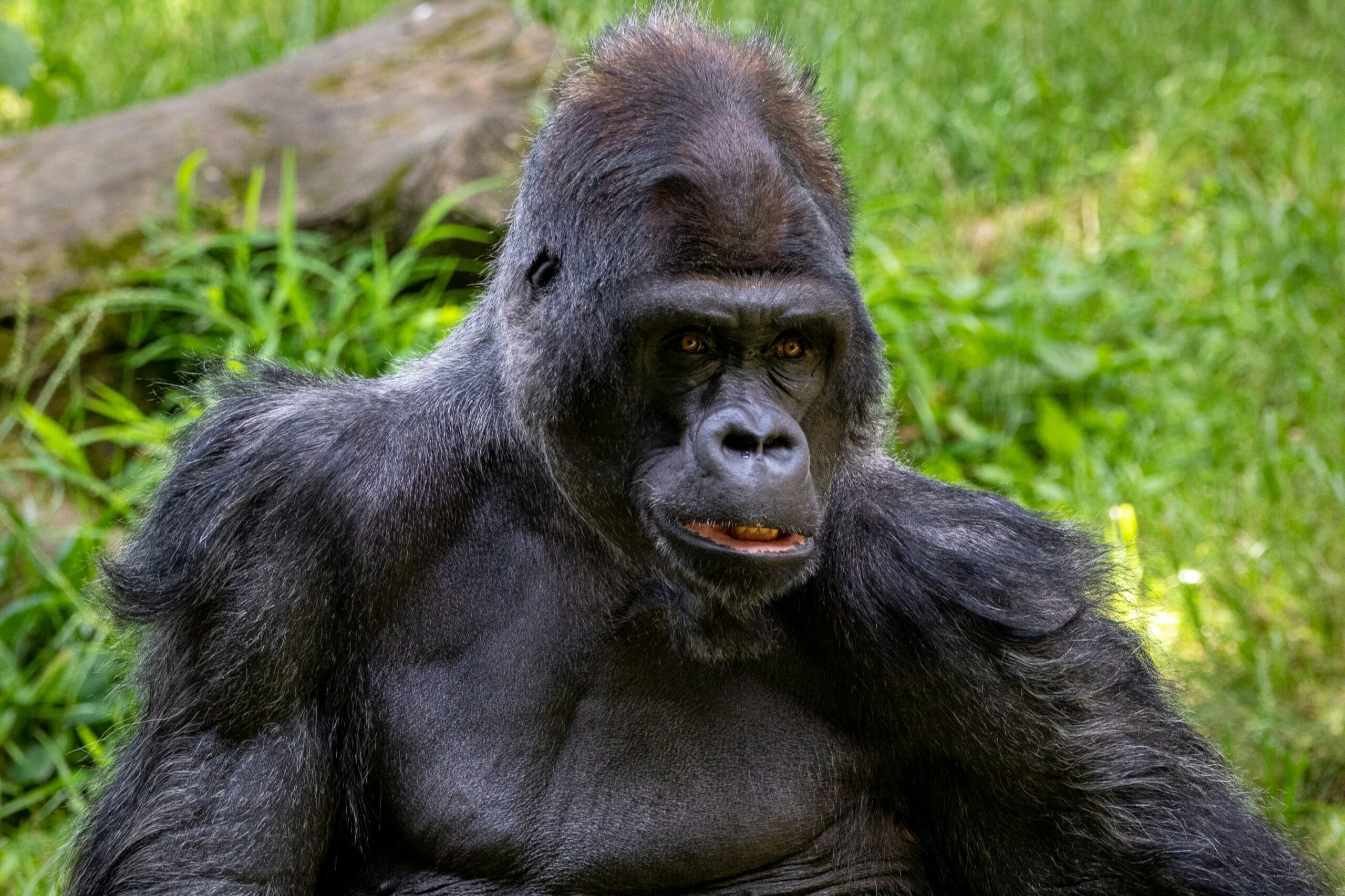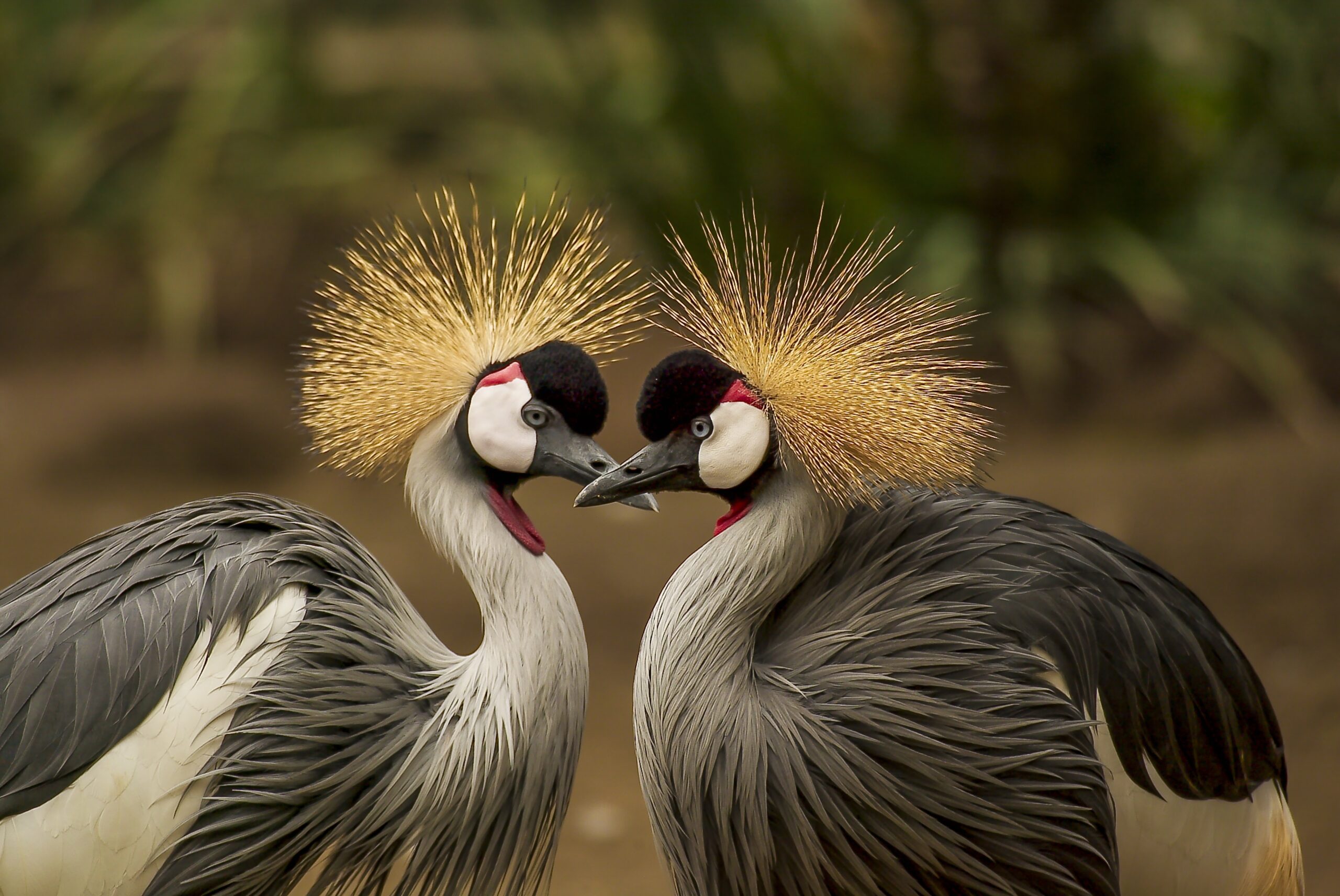Gorillas are among the most remarkable and intelligent creatures on Earth. These gentle giants boast unique traits and behaviors that make them a source of intrigue for wildlife enthusiasts worldwide. Ready to discover fun facts about gorillas? Explore the fascinating world of gorillas? Here are the top ten facts about gorillas that will amaze and inspire.
1. Close Relatives to Humans: The DNA Connection
One of the facts about gorillas is that they share approximately 98% of their DNA with humans, making them one of our closest relatives in the animal kingdom. This connection is reflected in their intelligence, emotional expressions, and the use of tools. Gorillas are also the largest species among the great apes, which include humans, chimpanzees, orangutans, and bonobos.
These powerful animals possess strong, prominent chests and shoulders, along with large human-like hands. Their muscular arms are longer than their legs, highlighting their unique physical adaptations.
2. Two Species and Subspecies of Gorillas
What Are the Species of Gorillas?
There are two distinct species of gorillas:
- Eastern Gorillas (Gorilla beringei)**
- Western Gorillas (Gorilla gorilla)**
Subspecies of Gorillas
Each species has two subspecies:
- Eastern Gorillas: Mountain gorillas and Grauer’s (Eastern lowland) gorillas.
- Western Gorillas: Western lowland gorillas and Cross River gorillas.
3. Gorilla Communication: Expressive Creatures
Another facts about gorillas you didnt know? Gorillas use over 20 distinct vocalizations, ranging from grunts and hoots to chest beats. These sounds help express emotions, warn of danger, and maintain cohesion within their troops. Facial expressions and gestures play an equally important role in gorilla communication, offering fascinating insights into their social interactions.
4. Diet and Eating Habits: Herbivorous Giants
What Do Gorillas Eat?
Gorillas are primarily herbivores, feeding on fruits, leaves, stems, and occasionally insects.
- Mountain gorillas consume more fibrous vegetation.
- Lowland gorillas have access to a fruit-rich diet due to their habitat.
Their eating habits are critical to maintaining the balance of their ecosystems.
5. Gentle Giants: A Display of Strength and Calm
Despite being 10 times stronger than the average human, gorillas are peaceful and non-aggressive by nature. Their famous chest-beating behavior, often dramatized in films, is typically a display of dominance intended to deter threats rather than initiate conflict. Do you want to learn more interesting facts about gorillas?
6. Gorilla Families: The Silverback’s Leadership
How Do Gorillas Live?
Gorillas are social animals that live in groups called troops. These troops are led by a dominant male known as the silverback, who is responsible for:
- Making decisions about feeding and resting spots.
- Protecting the troop from predators and rival gorillas.
The silverback plays a vital role in maintaining harmony within the group.
7. Tool Use: Resourceful Problem Solvers
Did you know that gorillas are capable of using tools? In the wild, they have been observed:
- Using sticks to test water depth.
- Creating makeshift ladders to aid climbing.
This ability highlights their advanced problem-solving skills. Interesting fact about gorillas, isn’t it?
8. Endangered Status: A Call for Conservation
Why Are Gorillas Endangered?
All gorilla species face threats that have led to their endangered status, including:
- Habitat loss due to deforestation.
- Poaching for bushmeat and trophies.
- Diseases like Ebola affecting their populations.
Conservation efforts such as eco-tourism and anti-poaching patrols are critical to preserving these majestic creatures.
9. Gestation and Parenting: The Gorilla Life Cycle
How Do Gorillas Reproduce?
Female gorillas experience a gestation period of 8.5 months, typically giving birth to one infant. Twins are rare. Gorilla mothers provide continuous care, with infants clinging to them for several months. Young gorillas begin to gain independence between 3–4 years old. Mating and reproduction in gorillas are also things of curiosity. They can have some positions like humans. Fun facts about gorillas, isn’t it?
10. Longest Lifespan in Captivity: Record-Breaking Colo
The oldest known gorilla, Colo, lived to be 60 years old in a U.S. zoo. In the wild, gorillas have a typical lifespan of 35–40 years, depending on environmental factors and threats to their survival.
Why These interesting Facts About Gorillas Matter
Understanding these facts about gorillas is essential to appreciating their role in the ecosystem and promoting conservation efforts. Gorillas are not just symbols of strength and resilience; they are key to maintaining the biodiversity of their habitats.
Final Thoughts on Facts About Gorillas
From their human-like qualities to their role as ecosystem caretakers, gorillas remain one of nature’s most extraordinary species. By learning about these fun, intersting facts about gorillas, we can support efforts to protect their populations and ensure their survival for generations to come.
Contact Ubuntu Voyages today, begin planning your gorilla trekking safari and take the opportunity to discover by yourself the interesting facts about gorilla in their natural habitat. Ubuntu Voyages is your trusted partner for exploring the natural wonders of Africa!




